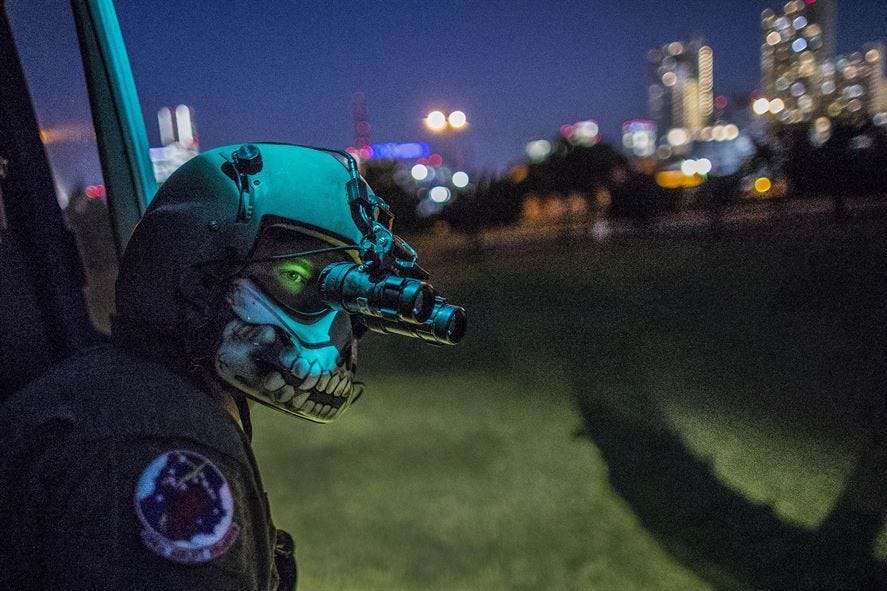The Evolution and Impact of Military Night Vision Technology

In the inky canvas of the night, the human eye struggles to distinguish forms and colors. But to the modern soldier, the night is no longer an insurmountable obstacle. The invention and continuous evolution of military night vision goggles have transformed nocturnal warfare. No longer constrained by natural lighting, soldiers can now operate with precision and efficacy even in the depth of night. But what has propelled this transformation, and what implications does this technology hold for the future of warfare?
Two Pillars of Night Vision Technology
Night vision goggles predominantly harness two principal technologies: image intensification and thermal imaging.
1. Image Intensification: These goggles, with their iconic green tint, amplify minimal ambient light, enabling the user to discern shapes and movements. The photons present in the environment are converted into electrons, which then bounce off a phosphor screen, producing the classic green image that’s synonymous with night vision.
2. Thermal Imaging: Instead of relying on ambient light, thermal imaging captures the heat emitted from objects. The warmth radiated from living beings or machines is translated into a contrasting image — typically shades of white or black based on the temperature gradient. This is particularly useful in environments with minimal light or during situations like fog and smoke where light-based vision can be obscured.
While both these technologies have distinct advantages, they’re not mutually exclusive. The blending of both has paved the way for advanced goggles like the Enhanced Night Vision Goggle-Binocular (ENVG-B) and ENVG III/FWS-I. These devices merge low-light and thermal images and layer them with augmented reality (AR) features, enhancing both the clarity and depth of information available to the soldier.
Augmented Reality — A Leap Forward
The integration of AR into night vision goggles has transformed them from passive viewing instruments to dynamic information hubs. For instance, the ENVG-B doesn’t just provide enhanced vision; it paints a comprehensive picture. Whether it’s map directions, compass bearings, or even weapon sights, soldiers have a wealth of data available without needing to divert their gaze.
This development, however, isn’t just about information. The fusion of AR with night vision tech ensures that soldiers can react faster. The ENVG III/FWS-I, for example, has a rapid target acquisition feature. By directly displaying weapon sight imagery within the goggles, soldiers can quickly align, aim, and execute, making them more agile and decisive in combat scenarios.
The Power Behind the Goggles: Battery Technology
Yet, while discussions about night vision often revolve around the viewing tech, the unsung hero is the power source: the battery. Night vision goggles, with their enhanced capabilities, require a consistent and reliable power supply. The choice of battery isn’t merely about longevity; it influences the performance, weight, and even the cost of the device.
From the commonly used alkaline batteries to the more energy-dense lithium variants, each type comes with its advantages and challenges. Alkaline batteries, though readily available, can be bulky, potentially affecting the agility of the wearer. Lithium batteries, with their higher energy output, are lighter and more efficient, especially in extreme conditions. However, they come with increased costs and potential safety concerns, especially if damaged.
The shift towards rechargeable batteries, such as Li-ion, NiCd, and NiMH, presents a sustainable alternative. Beyond the environmental benefits of reduced waste, these batteries can be cost-effective in the long run. Moreover, advanced devices like the ENVG-B showcase adaptability by supporting multiple battery types, ensuring that soldiers are never left in the dark due to power constraints.
The Path Forward
As military night vision technology evolves, it paints a picture of a future battlefield that never sleeps. The night, traditionally a period of rest and reduced activity, might become as bustling and active as the day. Soldiers, armed with advanced vision devices, will navigate the terrain with unparalleled clarity, making strategic decisions fueled by augmented reality insights.









